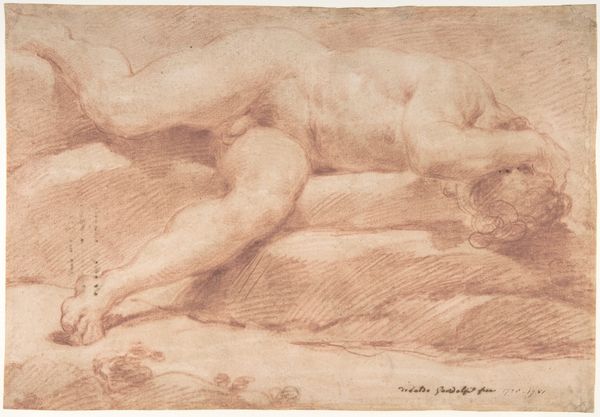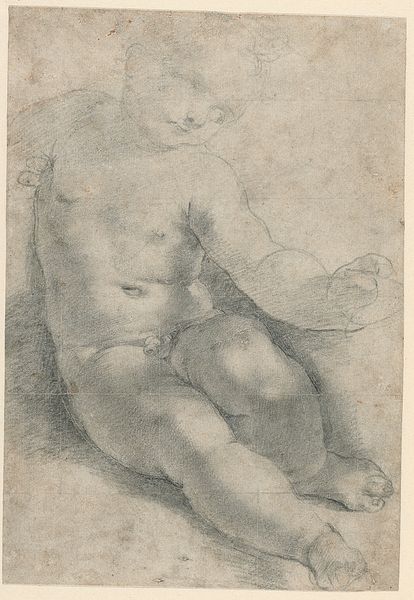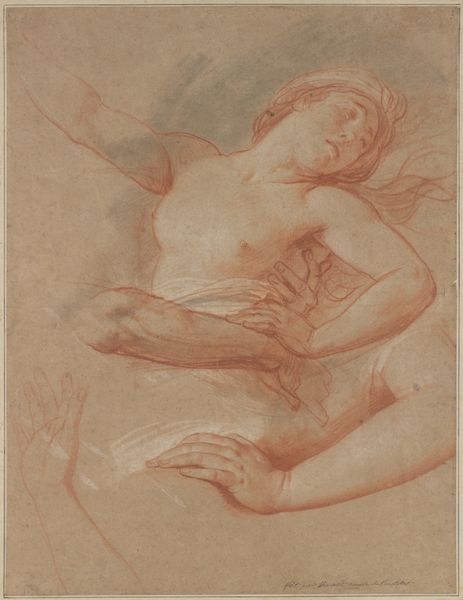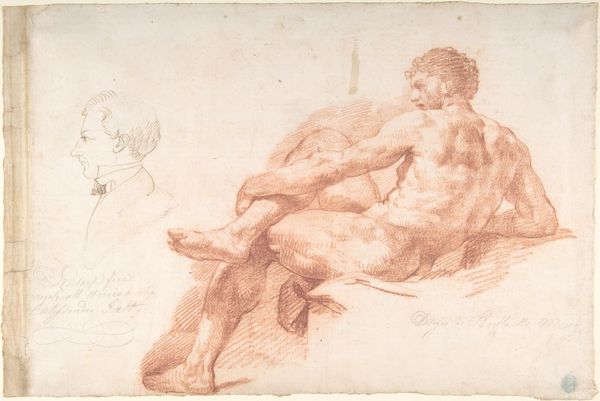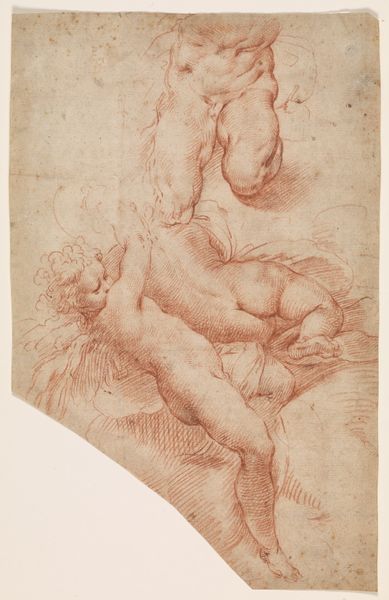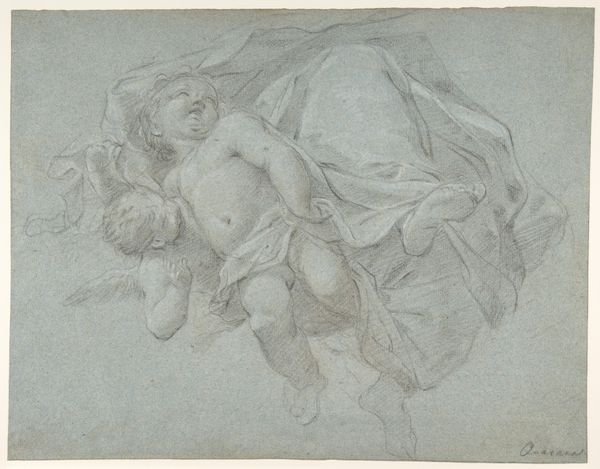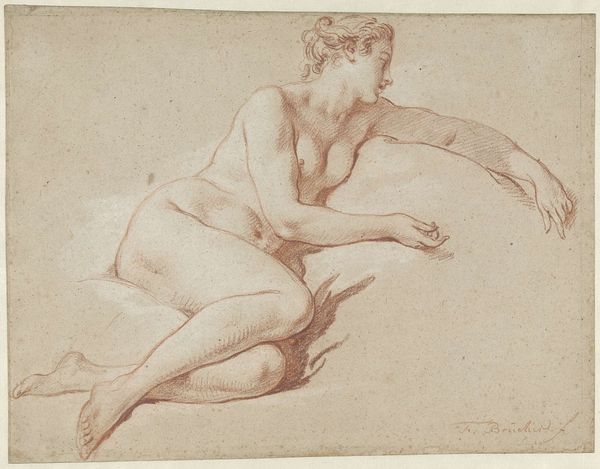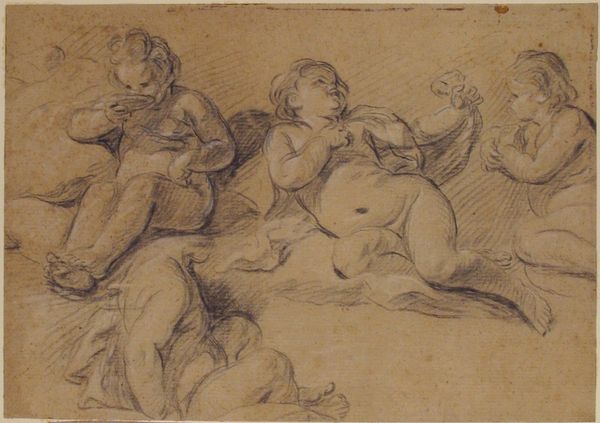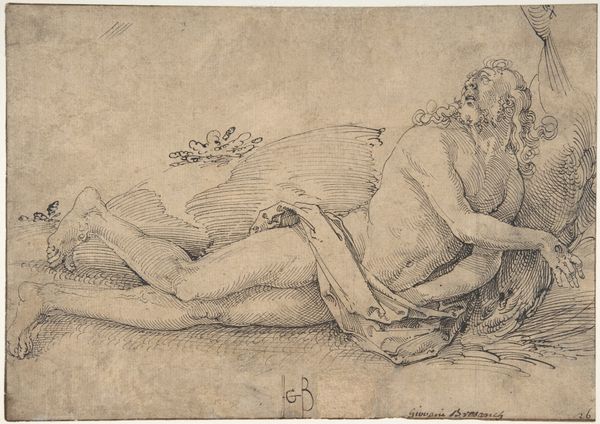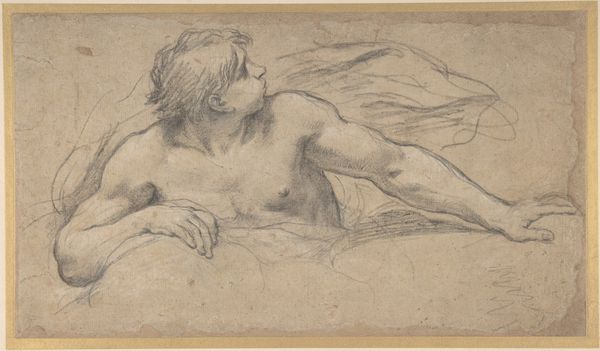
drawing, print, paper, chalk, charcoal
#
portrait
#
drawing
# print
#
charcoal drawing
#
mannerism
#
figuration
#
paper
#
11_renaissance
#
chalk
#
charcoal
#
charcoal
#
nude
Dimensions: 195 × 313 mm
Copyright: Public Domain
Editor: So, this is "Reclining Venus," a drawing by Hendrick Goltzius. It’s undated, done with charcoal and chalk on paper. There's something very soft and dreamy about it. What do you see in this piece? Curator: The persistent image of Venus carries immense symbolic weight. Throughout art history, she is not simply a goddess of beauty, but a vessel for conveying ideas about desire, sensuality, and even societal values. The choice of drawing in chalk and charcoal softens the eroticism. Consider how artists reuse these figures, constantly imbuing her form with the ideals and anxieties of a changing culture. Editor: That makes a lot of sense. It’s interesting how different eras treat similar themes so differently. Is she meant to evoke those emotions, or is something else being hinted at through those artistic choices? Curator: Ah, you are picking up on how art accumulates meanings over time. What emotional traces do you think are intentionally interwoven in the Mannerist Era as it is presented here? Notice the soft treatment; what emotions arise? Are those feelings separate from intellectual associations? Or are they deliberately entangled? Editor: I think maybe a feeling of longing comes to mind with the red chalk, a hint of passion in the shadows and light. I guess seeing it like this, it's not *just* a nude, but part of a long, evolving story. Curator: Exactly! This drawing is a piece of cultural memory made visible. Goltzius wasn’t just depicting a beautiful woman; he was actively participating in, and reshaping, a conversation that spans centuries. That’s how symbols live. Editor: I never really thought about art in a historical sense. That gives me so much more to think about, next time. Thank you! Curator: It was a pleasure sharing in this moment with you.
Comments
No comments
Be the first to comment and join the conversation on the ultimate creative platform.
